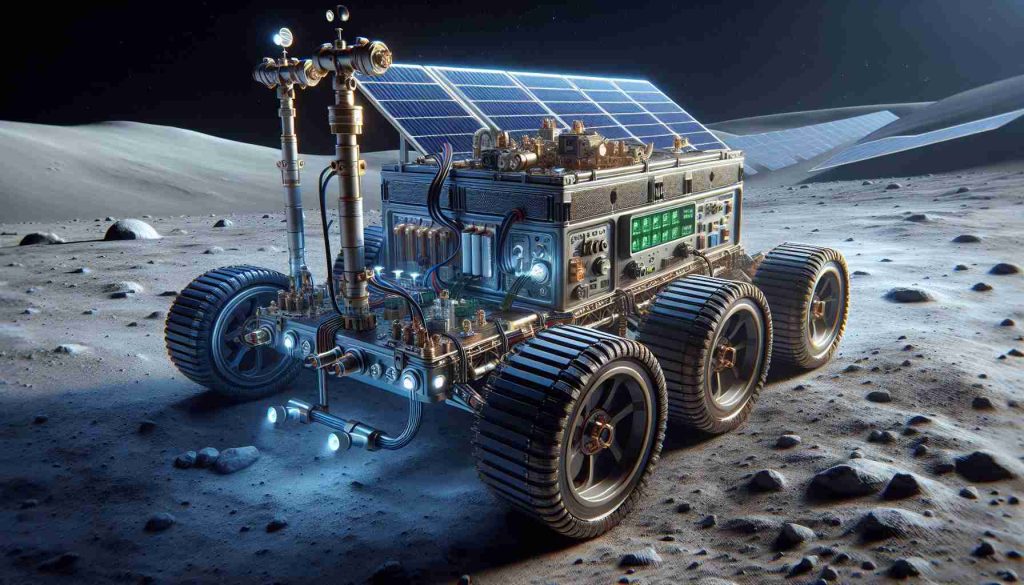
In a significant collaboration blending automotive advancements with space exploration, General Motors (GM) is poised to play a pivotal role in the next phase of lunar exploration. As NASA ambitiously forges ahead with the Artemis program, aimed at returning humans to the Moon and eventually marching toward Mars, GM is set to contribute its innovative electric vehicle (EV) battery technology to power the next generation of lunar rovers.
Summary: NASA’s vision for sustainable lunar exploration under the Artemis campaign is one step closer to realization with three companies contracting to develop a Lunar Terrain Vehicle (LTV), guided by GM’s EV batteries. The collective efforts of industry giants — Lunar Outpost, Lockheed Martin, Goodyear, MDA Space, and GM — promise to deliver a cutting-edge rover serving astronauts in future lunar missions.
The LTV, conceptualized by Lunar Outpost alongside an impressive consortium named Lunar Dawn, is destined to become a staple for astronauts navigating the challenging lunar terrain. It will function autonomously or with a crew, endure extreme temperatures, and feature advanced technologies such as a reconfigurable cargo bed and a highly functional robotic arm.
Lockheed Martin’s heritage in aerospace engineering will be instrumental in the vehicle’s production, while GM’s engineering will underpin the chassis, suspension, and crucial power source. Goodyear’s expertise, with roots in the historic Apollo missions, will be reflected in the specialized tires designed for the challenging lunar landscape, and MDA Space’s robotics will facilitate the vehicle’s manipulation and sample collection capabilities.
The collective expertise is expected to produce a prototype for NASA’s review within a year, though the full development timeline remains an unfolding narrative. However, one thing is clear: with the groundbreaking combination of automotive and aerospace technology, the anticipated LTV is slated to touch down on lunar soil by 2030, charting a new era of interplanetary exploration.
Automotive Industry Meets Space Exploration
The automotive industry has been revolutionizing travel on Earth, and now it’s extending its expertise beyond our atmosphere. General Motors, a historic leader in automotive innovation, is venturing into the new territory of space exploration through their partnership in NASA’s Artemis program. This initiative represents a significant step in the convergence of two advanced sectors: the automotive industry, primarily concerned with terrestrial transportation, and the aerospace sector, which explores beyond our planetary boundaries.
The collaboration is momentous, promising to bring about a new generation of lunar rovers powered by GM’s cutting-edge electric vehicle (EV) technology. As global efforts to combat climate change drive the automotive industry towards sustainable solutions, such as EVs, the technology developed for these applications also lends itself to the harsh conditions of space.
Market Forecasts for Space and EV Technologies
The market for space exploration and related technologies is burgeoning. Reaching into space requires innovation in energy storage, propulsion, materials science, and robotics – areas where the automotive industry has made considerable strides. The global space economy, valued at over $400 billion, continues to expand, with commercial space activities constituting the largest segment.
Meanwhile, the EV market is on a steep upward trajectory. Improved battery technology, governmental regulations favoring environmentally friendly vehicles, and shifting consumer attitudes predict a compound annual growth rate (CAGR) within the EV market of approximately 22% from 2019 to 2030.
Industry Issues and Challenges
The integration of automotive technology into space exploration is not without its challenges. The extreme conditions of space demand that terrestrial technologies be significantly adapted. The LTV project must ensure that these batteries are capable of operating efficiently in the cold vacuum of the moon, where temperatures can swing dramatically, and radiation levels are significantly higher than on Earth.
Supply chains for advanced components, reliability under harsh conditions, and the significant costs associated with space missions are also important considerations. Coordination between automotive and aerospace giants introduces complexities in project management and technology integration.
Connecting to Further Information
As the industry continues to evolve, so does the trove of resources and information. Interested readers can find more details on the global automotive industry and its advancement in electric vehicle technology on the General Motors official website at GM. For insights into aerospace, space economies, and NASA’s Artemis program, a visit to Lockheed Martin’s main site at Lockheed Martin can provide valuable knowledge. Finally, for an overview of the exciting developments in space exploration and technology, NASA’s main domain at NASA offers a plethora of information.
Together, these domains provide a broad landscape of the ongoing integration of automotive prowess with aerospace ambition, signaling a significant step toward sustainable and innovative endeavors in lunar exploration. By 2030, the joint feat of General Motors and its partners is expected to leave new tire tracks on the moon, demonstrating the far-reaching potential of cross-industry collaboration.

Igor Nowacki is a fictional author known for his imaginative insights into futuristic technology and speculative science. His writings often explore the boundaries of reality, blending fact with fantasy to envision groundbreaking inventions. Nowacki’s work is celebrated for its creativity and ability to inspire readers to think beyond the limits of current technology, imagining a world where the impossible becomes possible. His articles are a blend of science fiction and visionary tech predictions.
